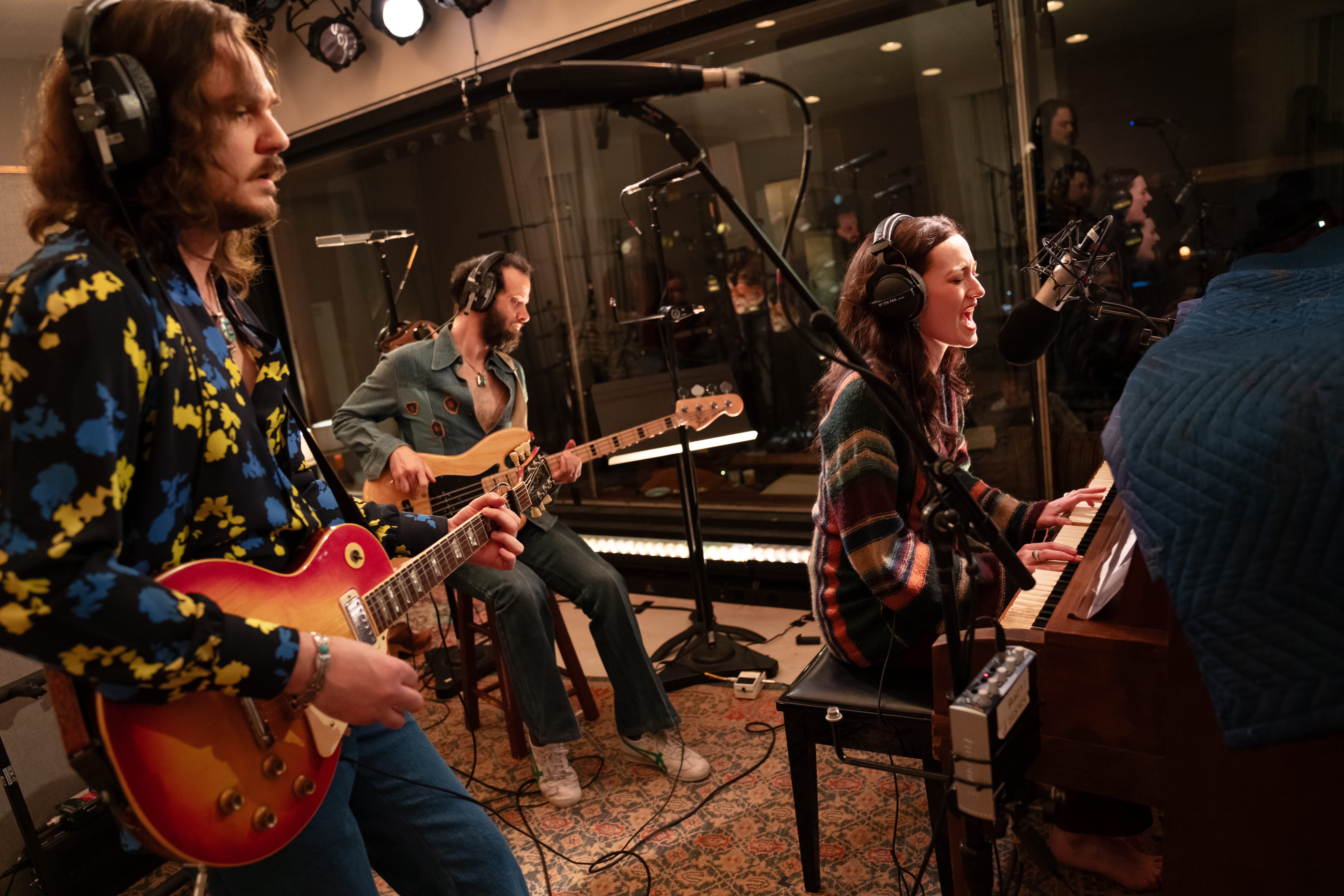Tall Horse

(Photo © Geof Grundlich)
[Ed note: Sandy McDonald reviewed this production at the ’62 Center for Theater and Dance at Williams College, where it played immediately prior to its current BAM engagement.]
********************
There are at least two ways to view Tall Horse, the ground-breaking collaboration between South Africa’s modernist Handspring Puppet Company and Mali’s traditional Sogolon Puppet Troupe that opens BAM’s 2005 Next Wave Festival. One can see the show as an historical event — it’s only post-apartheid that such an interracial, intra-African enterprise became possible — and as an aesthetic experiment. On both scores, Tall Horse is a resounding success. It even manages to rewrite history, to some extent.
From our Eurocentric point of view, intrepid explorers have been “discovering” Africa since the 15th century. Khephra Burns’s script for Tall Horse turns the tables, showing us how a young giraffe — and her handler, a former slave — discovered and influenced Europe in 1827 as part of a propitiatory gift sent by an Egyptian pasha to Charles X of France.
We see the tale unfold in flashback, within the framework of a contemporary young researcher (the marvelously kinetic Sandile Matsheni) poking through the holdings of a dusty museum in search of — well, it’s not quite clear, even with surtitles translating the French. (Given the cast’s multilingual backgrounds, it wouldn’t hurt to translate the English text as well). No matter: The opening scene, featuring a half-dissected mummy, promises the kind of gross-out humor that grade-school kids savor and adults rarely outgrow. A doctor who blows mummy-dust off his hands for a handshake deserves and gets a laugh, as does an errant, ancient finger mistaken for a snack. (“I did not give you the finger!” chides the doctor.)
Soon, the central story comes to the fore in the figure of an enormous, twice-as-big-as life pasha whose mammoth paw clumsily caresses his human arm adornment. The French consul Bernardino Drovett, whose bandy legs often lead a life apart from his beruffled torso, implants the idea of a truly lavish, pact-cementing gift unseen in Europe since the Renaissance. But since giraffes are dangerous as well as skittish — a well-aimed kick can kill a lion, we’re told — the hunters are rebuffed. Only one man, Atir (Matsheni again), appears to have the gift of giraffe-whispering. He’s entrusted with two colts, the weaker of which is shunted off to England (“If it dies, the king can stuff it,” Drovetti reasons. “It’s the thought that counts”).
We don’t see the full-grown Sogo Jan (Atir names her “the one who is always trouble”) until she appears before the nobles of Marseilles, who are caught up in the national penchant for collectomania. (“I should be very interested in a full-size Pygmy,” muses one). It’s a hushed and extraordinarily moving moment as the giant creature — 16 feet of nearly weightless kite-silk patches and cane, supported by two puppeteers on stilts — regally enters, neck curiously craning and ears flapping like Victorian fans. The mechanics fade: This wondrous being is real, and the adults in the audience are magically restored to childhood, a time when it’s easy to believe in the unbelievable.
Boundaries blur further as Atir convincingly romances a wooden countess — like most of the courtiers, a mix of African features and European finery — and bridles at his bond with Sogo Jan, longing to head home and fulfill his original dream: “One day, I will return to my village a rich man,” he says. Even the triumphant procession into Paris can’t quite assuage his heartache, but his allegiance with the other emigré proves unbreakable.
Just as Paris was indeed dazzled by the extraordinary creature thrust into its midst, so will audiences be as Tall Horse makes its way around the country, playing in Pittsburgh, Ann Arbor, Chapel Hill, and at the Kennedy Center in Washington, D.C. Clearly, puppetry in this context and of this caliber is fit fare for discerning adults, not merely children. If you do take kids along, you might want to shield their eyes when the historically accurate toy guillotine appears. (Parisian children of the early 19th century actually had such playthings, and may well have used them in the shocking manner depicted.) But, aside from this odd and thankfully brief aberration, Tall Horse is a family-friendly show. Bridging nations, races, even species, it effectively expands the very concept of “family.”










